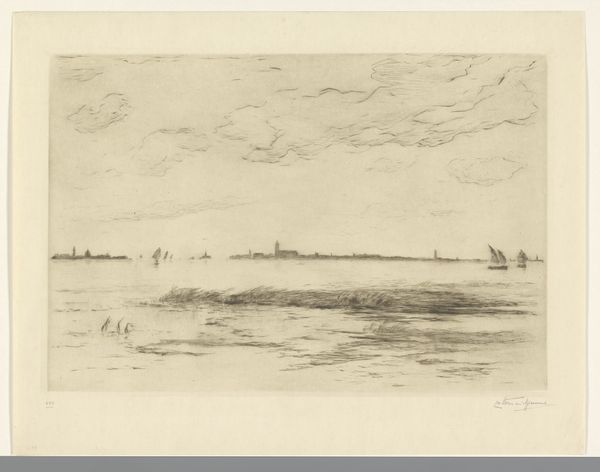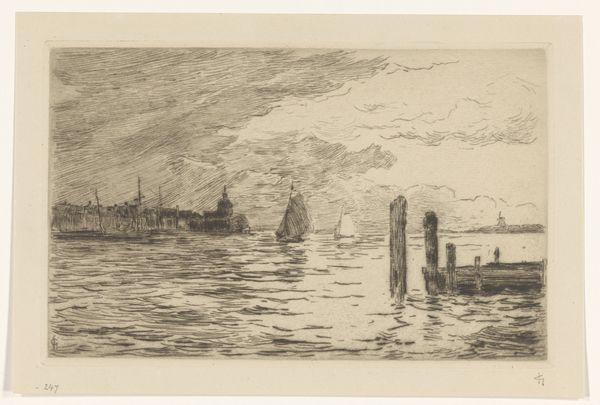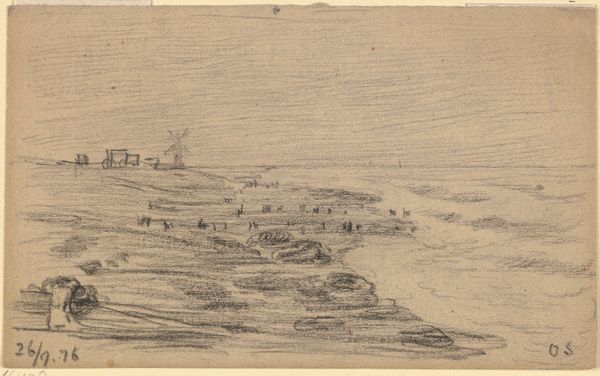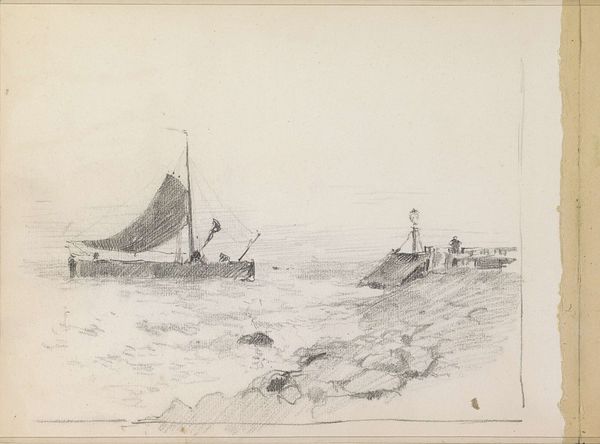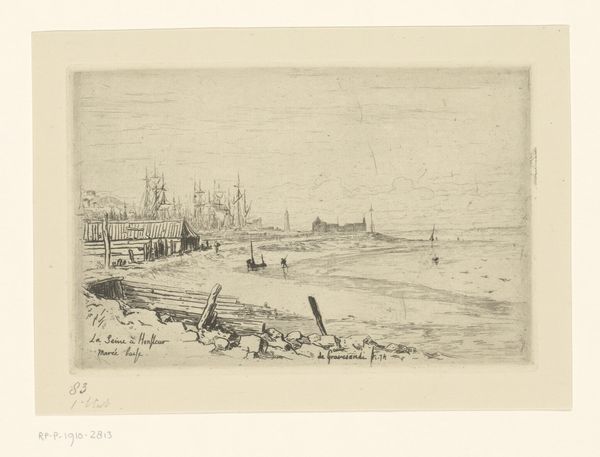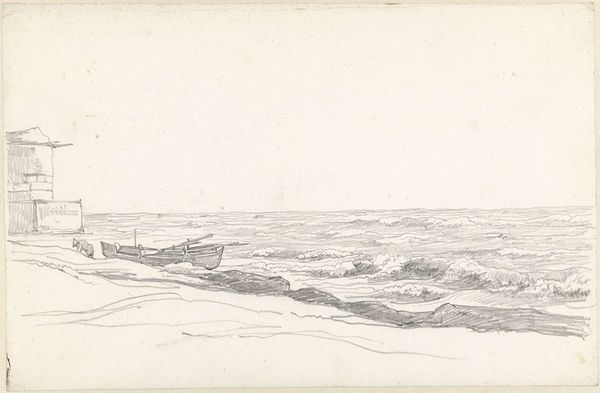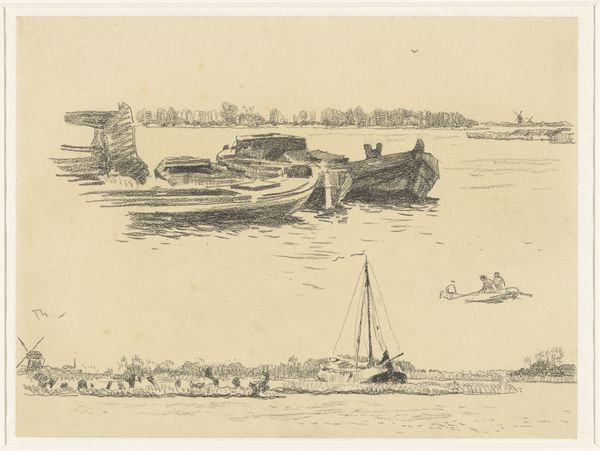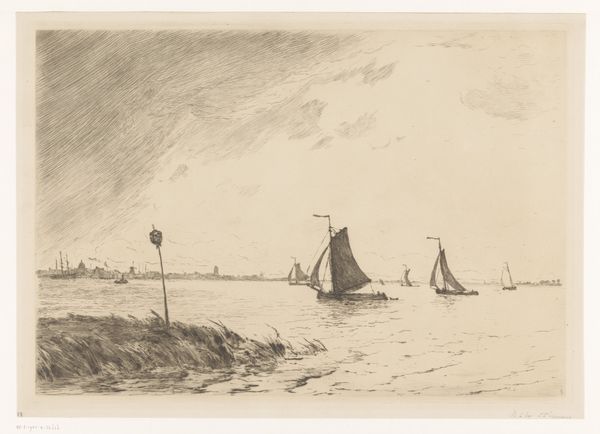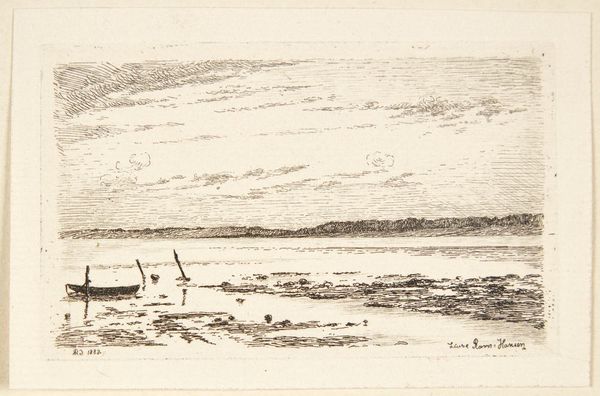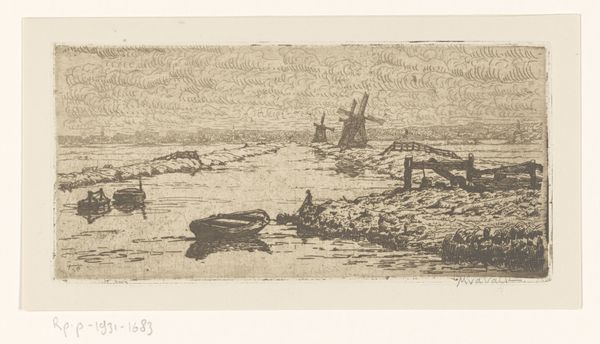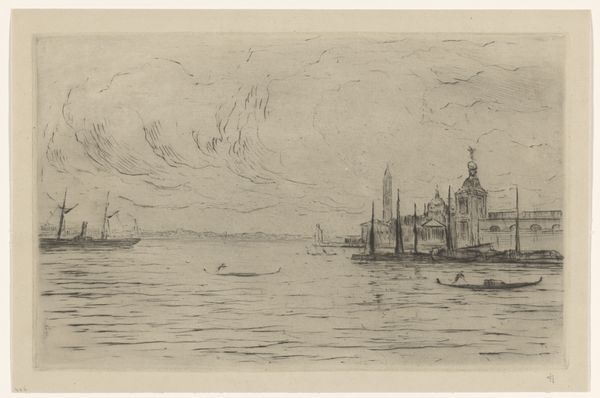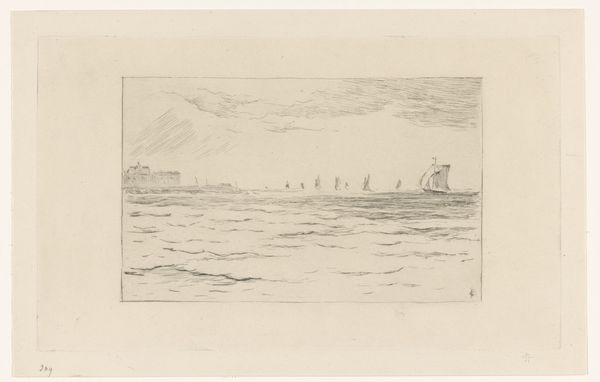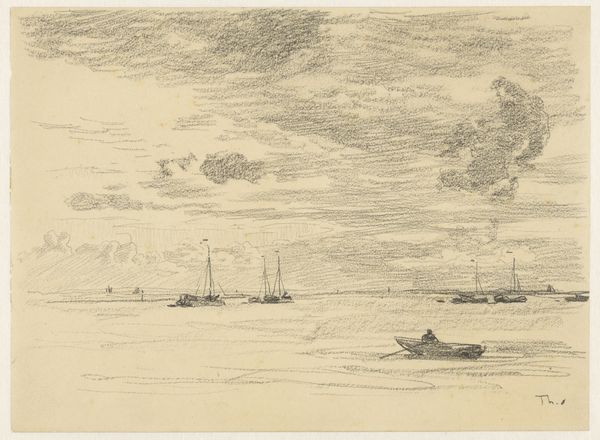
Gezicht op de Maas tussen Dordrecht en Rotterdam c. 1877
0:00
0:00
drawing, print, etching
#
drawing
#
dutch-golden-age
# print
#
etching
#
landscape
#
river
#
realism
Dimensions: height 60 mm, width 163 mm
Copyright: Rijks Museum: Open Domain
Editor: This is "Gezicht op de Maas tussen Dordrecht en Rotterdam" by Carel Nicolaas Storm van 's-Gravesande, dating from around 1877. It’s an etching, a print. The thing that really strikes me is the vastness, even in such a small format, and the almost chaotic energy of the water's surface. What do you see in this piece? Curator: Primarily, I observe the masterful handling of line and tone. The artist has skillfully used the etching technique to create a complex interplay of light and shadow. Note how the density of lines varies to suggest depth and texture, particularly in rendering the water's surface. Do you notice how the composition is structured? Editor: Yes, I think so. The horizon line is quite low, which makes the sky feel very expansive. And the boats are distributed across the space, not really centered. Curator: Precisely. The asymmetry and the distribution of elements create a dynamic visual experience. The formal qualities—the lines, the tonal range, and spatial relationships—are not merely representational. They contribute to an overall feeling of movement and atmosphere. One can analyze the materiality to find a sort of emotional tension to contrast the stoic scenery itself. Editor: I see what you mean. So it's not just about depicting a scene, but also about using the etching process itself to convey something more abstract? Curator: Precisely. It’s about the artist’s control over the medium to create visual interest, not to mirror the scene exactly but rather offer the visual structure as a whole. Consider how different choices regarding line and value would change the entire sensation of the artwork. Editor: This has really opened my eyes to looking at the artistic decisions. Curator: Indeed, formal analysis allows us a valuable method of appreciating visual construction, not merely illustration.
Comments
No comments
Be the first to comment and join the conversation on the ultimate creative platform.
